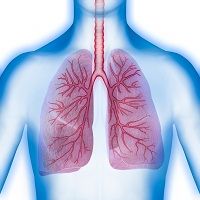Article
Eosinophilic Inflammation Determines Asthma Severity, and Use of Eosinophils as Biomarkers Can Refine Monoclonal Antibody Therapies and Identify Responders
Author(s):
Asthma patients with eosinophilic inflammation respond well to corticosteroids and interleukin- 5 antagonists. The ability to identify eosinophil biomarkers specific to certain disease states could help clinicians refine therapies and determine which patients are likely to respond to them.

Approximately half of all asthma patients have elevated levels of eosinophils, and eosinophilia of the airway or blood may persist in spite of guidelines-based treatment of asthma. Eosinophils can cause epithelial damage and airway remodeling in asthma patients, and eosinophilia is a marker for severe asthma as well as for more frequent exacerbations of asthma, according to a review just published in the World Allergy Organization Journal.
This article details eosinophil effector mechanisms, surface markers, and clinical outcomes associated with eosinophilia and asthma severity. Mast cell activation by common allergens such as pollen or pet dander leads to the release of interleukin-5 (IL-5).
This cytokine stimulates the production and release of eosinophils that are then recruited into tissues. This step leads to the recruitment of a subset of lymphocytes that contribute pro-inflammatory mediators that establish the cycle of chronic inflammation.
By exerting this effect and by producing and releasing a wide range of chemokines, cytokines, lipid mediators, and other growth factors, eosinophils contribute to a variety of immune responses and inflammatory cascades in the lungs of asthma patients.
In addition, eosinophil granules contain highly charged proteins that mediate toxicity toward pathogens and tissues, and the accumulation of eosinophils in the airways of patients with severe asthma correlates with markers of local tissue remodeling.
The review also details the potential of eosinophils or their products to serve as biomarkers and to predict patient responses to various therapeutic agents. For example, because eosinophilia indicates which patients will respond to corticosteroid therapy, identifying patients with eosinophilic inflammation could help clinicians practice more personalized medicine. The review authors recommend eosinophil cationic protein (ECP) as the preferred marker of eosinophilic inflammation.
The authors also note that the development of eosinophil-targeting monoclonal antibodies such as the IL-5 antagonists mepolizumab (Nucala/GlaxoSmithKline) and reslizumab (Cinqair/Teva) makes using eosinophils as biomarkers particularly important in the treatment of severe asthma. An ability to identify biomarkers specific to certain disease states could help clinicians refine these antibody therapies and determine which patients are likely to respond to them.
Phase three studies support the use of IL-5 antagonists to reduce steroid use and frequency of asthma exacerbations, but the long-term effects of these agents on airway remodeling remain unknown. In addition to clarification of these long-term effects, further research is needed to understand the role of eosinophils in different types of asthma, to discover how eosinophils contribute to asthma exacerbations, and to identify new eosinophilic targets for therapy.




